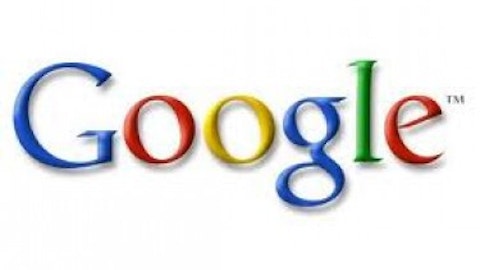On March, 30, 2011, Google Inc (NASDAQ:GOOG) announced that Kansas City, Kan., would be the first city to receive the search giant’s widely coveted high-speed Internet and television service, Google Fiber.

Image source: Google.
Perhaps unsurprisingly, even though Google Inc (NASDAQ:GOOG) wouldn’t provide specific details on pricing or service levels until Kansas City’s pre-registration opened for the service more than a year later, the rest of the world couldn’t help focusing on a single line in the company’s official blog post that day that read, “We’ll also be looking closely at ways to bring ultra high-speed Internet to other cities across the country.”
Alas, we had to wait more than two years, until this April, before Google Inc (NASDAQ:GOOG) finally announced the second city: Austin, Texas, with a targeted mid-2014 implementation.
Then, just days later, Big G shocked industry watchers by naming the comparatively tiny 116,000-citizen Provo, Utah, as Fiber’s third lucky community, with tentative plans to have the service up and running by the end of 2013.
In that case, however, rather than starting from scratch and building out an infrastructure based on the number of pre-registered customers, Google Inc (NASDAQ:GOOG) got a head start by acquiring iProvo, an existing fiber-optic network owned by the city for which Google plans to upgrade to gigabit speeds and expand service availability.
Now, over the past few months, Google Inc (NASDAQ:GOOG) has gone on a veritable expansion spree across the Kansas City area. As of today, including Austin and Provo, the company has named a total of 17 cities to which Google Fiber will be (or already has been) installed.
Can Google compete on a larger scale?
But as fellow Fool Evan Niu pointed out in May, market researcher IHS doesn’t think Google will ever be a large player in the broadband market, thanks largely to prohibitively high buildout costs and resistance from existing broadband providers that will surely be loath to give up their already enormous customer bases.
After all, in response to Google’s Austin announcement, the folks at Time Warner Inc (NYSE:TWX) have already attempted to sweeten the pot for existing subscribers by more aggressively building out their citywide Wi-Fi network.
In addition, in an unsuccessful attempt to delay what was the Provo city council’s unanimous vote of approval for Google Fiber, CenturyLink, Inc. (NYSE:CTL) even sent a letter to the city of Provo objecting to Google’s purchase of the iProvo fiber network assets.
Nonetheless, Google Fiber continues to march onward, which is why I’m convinced it’s an equally enormous mistake to underestimate the power of one of the world’s most innovative companies — one that was founded less than 15 years ago and boasted a net income of more than $3.2 billion last quarter alone.
After all, a quick sum of the most recently estimated populations of all the planned cities to receive fiber so far yields a current potential customer base of close to 2 million — that’s around 40% higher than the 1.4 million people IHS estimated were to have access to Google Fiber as of its report in May.
And sure, even if Google could lock in 100% of that winnable business — an admittedly unlikely feat — it’d still be peanuts compared with the roughly 20 million high-speed Internet customers Comcast Corporation (NASDAQ:CMCSA) already has, and less than 0.07% of last year’s estimated 313 million population of the United States.
But I certainly wouldn’t expect Google to slow the ever-accelerating pace at which it’s growing its Fiber services, and I would be amazed if traditional broadband customers didn’t simply leave in droves upon its arrival, considering Google’s incredible value proposition compared with the existing services out there today
As a reminder, here are Google Fiber’s most recent prices:
1). $70 per month for Gigabit upload and download Internet speeds.
2). $120 for both Gigabit Internet and TV services.
3). Free 5 Mbps Internet for anyone willing to either fork out a one-time $300 setup fee, or pay $25 per month for 12 months (remember, Google still makes money through increased advertising by driving more traffic to its site).
The multibillion-dollar question
And so the question, with enormous financial implications for everyone involved, is this: When will Google Fiber arrive in your town?
That’s entirely up to the folks at Google, who’ve understandably decided not to publicly outline their plans for domestic broadband domination.
In fact, now it’s harder than ever to determine when and where Google Fiber will pop up. A few months ago, after Kansas City and Austin were named, it would’ve been easy to say cities with the largest metropolitan populations would be next in line. That way, Google would have no problem simply spreading out in the surrounding areas until they permeated the largest segments of the U.S. population.
But then Provo was named, making it clear that Google is more than willing to use its deep pockets to buy out existing infrastructure if it means that bringing Fiber to a community — even a relatively small one — could happen more quickly.
Even so, if Google has made one thing clear, it’s that it intends to continue expanding Google Fiber for the foreseeable future.
As a result, while we can’t know exactly when Google Fiber will arrive in your neighborhood, that’s why I’m convinced you can sleep easy knowing it will ultimately happen.
The article When Will Google Fiber Come to Your Town? originally appeared on Fool.com and is written by Steve Symington.
Fool contributor Steve Symington has no position in any stocks mentioned. The Motley Fool recommends and owns shares of Google.
Copyright © 1995 – 2013 The Motley Fool, LLC. All rights reserved. The Motley Fool has a disclosure policy.





